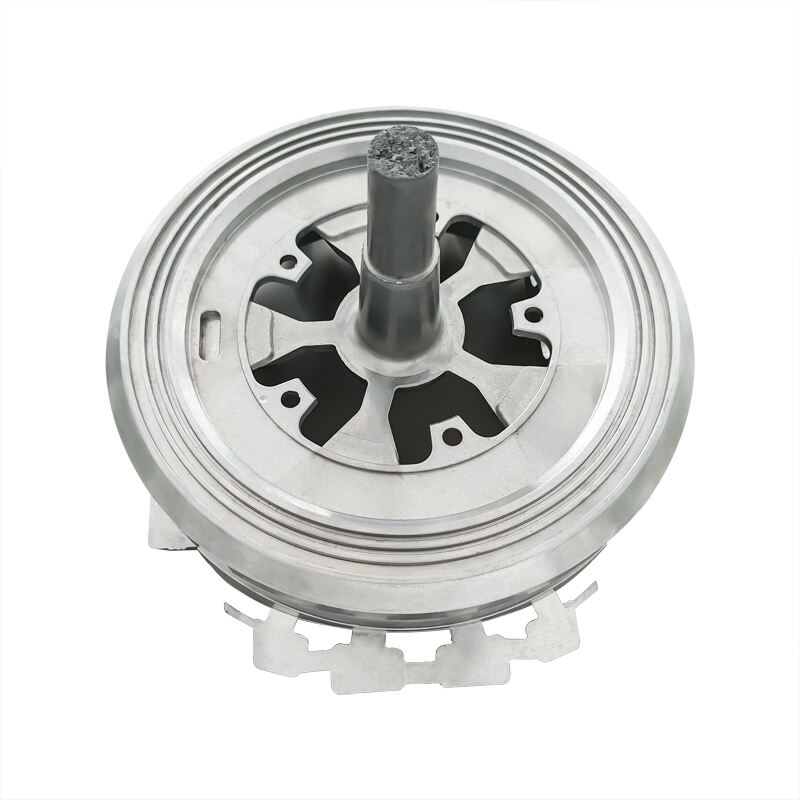مقدمة
واحدة من الركائز الأساسية في التصنيع هي القالب الصب الصناعة، التي على الرغم من تاريخها الذي يمتد لمئة عام، تواجه الآن ضغوطًا معاصرة من أجل الاستدامة البيئية. صناعة تتزايد فيها التنظيمات ووعي البيئة على نحو متزايد. على الرغم من أن قطاع علوم الحياة مبتكر للغاية، حيث تتحسن العلوم كل يوم مع زيادة عدد الحالات المعقدة القابلة للعلاج، إلا أنه يمثل أيضًا واحدة من النمو غير المنقطع في التلوث. في هذه المقالة، سنناقش عدة اعتبارات بيئية واستدامة تحدد الطريق إلى الأمام الصب بالضغط .
التصميم من أجل المدى الطويل: اختيار المواد المستدامة
تبدأ استدامة صب القوالب بنوع المواد المختارة. وبالمثل، فإن الطلب يتزايد على المواد القابلة لإعادة الاستخدام مثل سبائك الألمنيوم والمغنيسيوم التي يمكن إعادة تدويرها عدة مرات دون تغيير خصائصها المميزة. يقلل هذا التحول من استخدام الموارد الأولية - مما يخلق نظام إعادة تدوير مغلق ينتج عنه نفايات أقل ويحافظ على النظم البيئية الطبيعية.
إجراءات كفاءة الطاقة
ومع ذلك، تتطلب عملية الصب بالقالب اهتمامًا عالميًا يتعلق باستهلاك الطاقة، مما دفع الشركات للبحث عن حلول لتكون أكثر فعالية من حيث التكلفة. سيساعد ذلك في استثمارات توفير الطاقة، مثل شراء معدات عالية الأداء وضمان استخدام التدفئة والتبريد بكفاءة لتقليل كمية الطاقة المهدرة. عمليات أكثر استدامة نظرًا لأن الانبعاثات تزيد من التكاليف، يمكن أن يساعد تتبع استهلاك الطاقة الشركات في تحديد طرق لتحسين الأداء.
حملات إدارة النفايات وإعادة التدوير
خذ صب القوالب كمثال، وهو عملية تتطلب نفقات كبيرة من الموارد مثل المعدن والرمل؛ تصبح إدارة النفايات حاسمة في هذه الحالة. تقوم الصناعة بتنفيذ ممارسات لتقليل توليد النفايات مثل تحسين أنظمة البوابات والممرات مما يقلل من هدر المعدن. بالإضافة إلى ذلك، يتم وضع برامج إعادة التدوير للمواد الخردة للمساعدة في تعظيم استخدام المواد الثانوية وتقليل الآثار البيئية مع توفير المال للمجموعات.
جهود الحفاظ على المياه
تُستخدم المياه للتبريد والتشحيم وعمليات التنظيف أثناء تشغيل صب القوالب. لقد تكيفت الصناعة مع أنظمة إعادة تدوير المياه وإعادة استخدامها، مع استخدام بعض الآلات مثل آلة الضرب الحر لتوفير كل قطرة. نظرًا لأن X الخلايا يمكن أن تقلل من استهلاك المياه بنسبة تصل إلى 80%، فإن صناعة صب القوالب لديها طريقة مناسبة على المصارف المحلية.
تقليل ومراقبة الانبعاثات
اليوم هناك قلق عالمي كبير بشأن انبعاثات الهواء الناتجة عن عمليات الصب بالقالب. استجابةً لذلك، تتحرك الصناعة نحو اتخاذ خطوات تهدف إلى تقليل الانبعاثات مثل أنظمة العادم الفعالة والتحكم في عمليات الفرن والذوبان. نظام الانبعاثات والتحكم للامتثال للوائح البيئية مما يؤدي إلى عمليات أنظف.
السعي للحصول على الشهادات والمعايير البيئية
في صناعة الصب بالقالب، يتزايد عدد الذين يبحثون عن الشهادات البيئية مثل ISO 14001. إنها تظهر أن الشركة لديها رغبة في اتباع ممارسات التصنيع المسؤولة والتوافق مع السياسات البيئية. اتباع الممارسات البيئية المعتمدة من قبل الصناعة يخلق ويسمح لنا بالسعي نحو تحسين مستمر في أداء بيئتنا.
تقييم دورة الحياة ومؤشر الاستدامة
يتم إجراء مثل هذه التقييمات لتحديد كيف تساهم عمليات الصب بالقالب في العبء البيئي طوال حياتها. دورة. توفر هذه المورد منهجيات قائمة على العلوم، مثل توصيف الاستدامة المصممة لمساعدة الشركات على قياس استدامة طرق تصنيعها. يمكن للصناعة أيضًا إنشاء نماذج معلومات ومعادلات طاقة للمساعدة في توليد عالم أكثر استدامة.
التنسيق والتحقيق من أجل إجراءات مستدامة
من أجل التنمية المستدامة لصب القوالب بمعنى أكثر شمولاً، فإن التعاون مهم جدًا بين شركات صب القوالب، وجمعيات الصناعة، والمؤسسات البحثية. ستعزز المشورة، والبحث المتزامن في التكنولوجيا المستدامة، وتبادل المعرفة دائمًا النشاط الاستدامي في صناعتنا.
الخاتمة
صناعة صب القوالب تتصدر السباق من حيث التعامل مع القضايا البيئية وقضايا الاستدامة لتقليل بصمتها الكربونية. سواء كان ذلك في اختيار المواد الخام لدينا، أو تحسين كفاءة الطاقة z إدارة النفايات أو إدارة النفايات لتقليل الانبعاثات؛ كل ممارسة لا تساعد فقط في حماية البيئة ولكنها أيضًا جيدة على ملف الشركة بينما هناك طلب متزايد على المنتجات الصديقة للبيئة. مع تقدم الابتكار والاستدامة في جميع أنحاء الصناعة، فإنها تتجه نحو مستقبل أكثر خضرة سيؤمن مكانتها في السوق العالمية لعقود قادمة.

